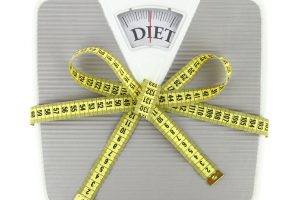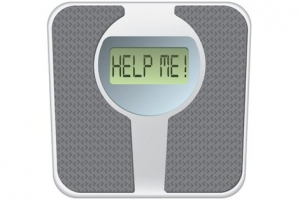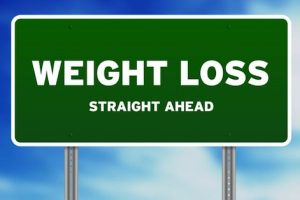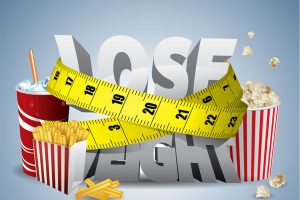“Empty calories foods” is the term used to describe foods that provide energy (calories), but offer little or nothing in terms of nutritional value. The most common sources of empty calories are those high in fat or sugar (or both!) and are often processed or snack foods. Think about soft drinks, candy, chips and French fries – to name just a few.
All of these foods are high in sugar or fat, provide a large amount of calories, but provide few or no vitamins, healthy fatty acids, fibre or essentials minerals to the body.
Unfortunately, these foods are consumed in vast quantities in America and in some part are probably to blame for high levels of obesity and diet related illness such as Type 2 Diabetes and Heart Disease.
Empty Calorie Foods and Malnutrition
About one third of Americans are classified as obese. What many people do not realise is that many of these people may also be malnourished. Although most people associate malnutrition with people who are under weight and do not consume enough calories, a person who exists solely on a diet of high fat and sugar foods is also at risk of dangerous nutrient deficiencies.
A diet high in empty calorie foods can lead to lack of vitamins and minerals that can cause both minor and serious health problems. This is often forgotten if the person is obese, as it is presumed that the person is eating sufficient food to provide these nutrients. People who often replace healthy, nutrient rich foods with empty calorie alternatives are at a high risk of micronutrient deficiencies.
This is illustrated in the eye opening documentary “Supersize Me” , in which Morgan Spurlock develops a huge range of health problems, many of which were probably caused at least in part to nutrient deficiencies, after thirty days consuming only McDonalds food.
What are the most common empty calorie foods?
The first culprits are those foods and drinks which are high in sugar, and not a lot else. These include not only the obvious soft drinks, ‘fruit’ drinks (often containing no actual fruit), sports drinks and candy, but also sources of calories which are easily added to your diet without realizing such as condiments. Syrups and jams can add a huge amount of calories if used in excess and provide very little nutritional value.
The second group of empty calorie foods are those high in fats and oils. Chips, crackers and other commercial snack foods are often high in saturated fats, providing a huge amount of calories and very little nutrition.
High fat sauces and meats such as bacon are other foods to avoid. One tablespoon of Mayonnaise for example , will add about 100 calories and 10 grams of fat to your meal, and while some might argue that the eggs yolks used to make homemade mayo are packed full of vitamins, many commercial varieties have not been anywhere near an egg and don’t even have this to save them.
Cakes, pastries and some sweet breads also fit the empty calorie category, as do flavoured popcorns which are generally coated in saturated fats and sugar.
The third main source of empty calories are fast and processed foods. Although not strictly devoid of all nutritional value, these foods provide such as large dose of sugar, fat and calories that the small nutritional benefit is not really worth it. Frozen pizza or a hamburger for example will feature some vegetables providing vitamins and essential amino acids from meat proteins, but given the fat content they also provide a huge amount of calories that contribute nothing to your health.
It is also important to remember that alcohol is a source of empty calories, and one that is all too easy to over consume. Whilst red wine has the benefits of heart healthy antioxidants, the same cannot be said for spirits and beer.
Alcohol is second only to fat in terms of calories per gram of all the macronutrients. A night out on the town could result in the intake of a meals worth of calories from drinks alone, not to mention the quick burger grabbed on the way home, leaving a night of empty calories with little nutritional benefit.
How can we avoid empty calories?
If you are watching your weight, the last thing you want to do is eat empty calories. If you are eating less than normal to reduce your calorie intake, it is important that every food that passes your lips is worthwhile and benefiting your body in some way. This is not only important for dieters; whilst the occasional empty calorie food is OK, anybody who is consuming a large quantity is at risk of nutrient deficiencies, regardless of their weight.
It is important for everyone, overweight or not to base their diet on foods that benefit their body, so here are some changes you can make to your diet to get more nutritional value for your calories.
Swap chips and fried savoury snacks for nuts, seeds and dried fruit.
Although these foods are still fairly high in calories they provide a huge amount more nutrients that are beneficial to your body. Nuts are packed with Omega three fatty acids, vitamins, minerals and antioxidants, while dried fruit provides many important vitamins. For roughly the same serving size, almonds contain a similar amount of calories as chips, but half the saturated fat, and a many more healthy nutrients. (See also: 13 healthy snack ideas for weight loss)
Go wholegrain
By swapping breads, cakes and crackers made from refined white flour, for those made with wholegrain you are easily upping the nutritional value of your snack. Whole grains contain essential B vitamins used for energy production in the body. They are also slower to be digested and therefore keep you full for longer.
Make your own versions of processed foods.
If you make your own pizzas, hamburgers and even French fries, you can eliminate empty calories and boost the nutrition value by knowing exactly what goes into the food. A healthy vegetable pizza made on a whole grain pita bread base with roasted vegetables, low fat cheese and lean chicken will contain far more nutritional value than those you buy in the freezer section of the supermarket, and is likely to contain far less calories and fat. You can even try making French fries with vegetables such as sweet potato or pumpkin, roasted in the oven with olive oil for a nutrient packed low calorie snack.
Swap soft drinks and cordials for fruit juices.
As with nuts and dried fruit, juices, even those made directly from fruit, are high in calories, and so should not be consumed in excess. However, juices also provide a huge amount of vitamins and for the amount of calories, are therefore a much more nutritious choice.
Look for reduced fat and sugar varieties of your favorite treats.
Generally these contain less calories than normal varieties, hence reducing empty calories (although not always increasing nutritional value). Be aware of reduced fat foods that substitute fat for a higher sugar content, these may even contain more calories than the original!





